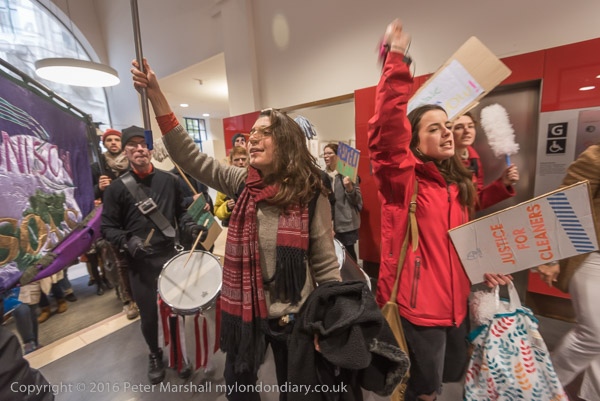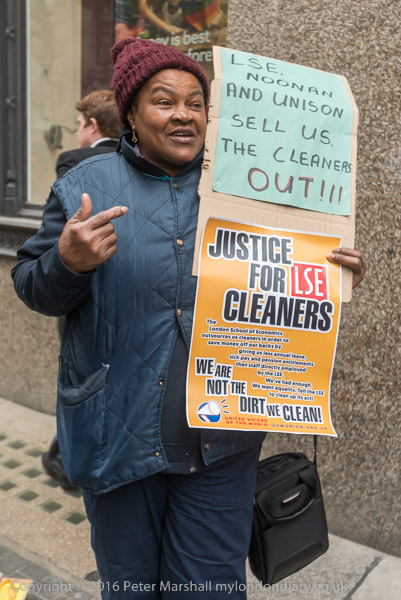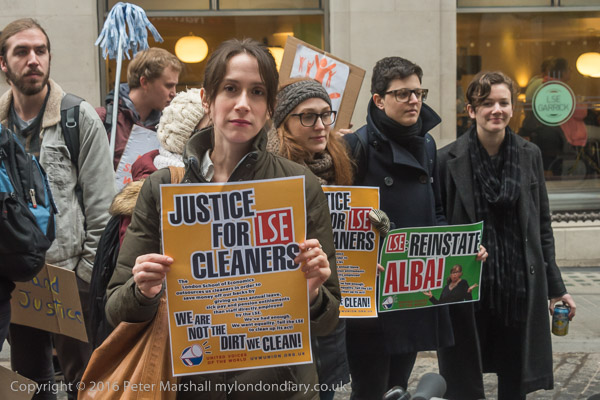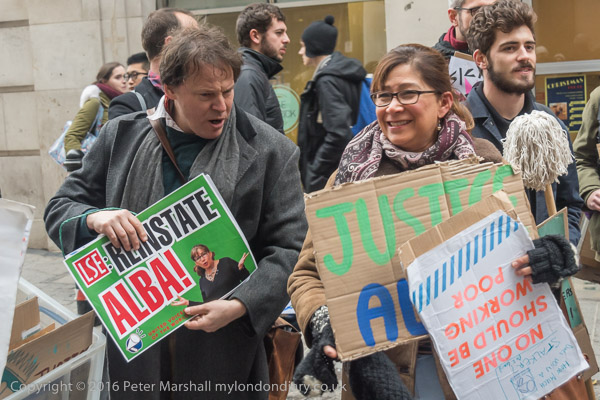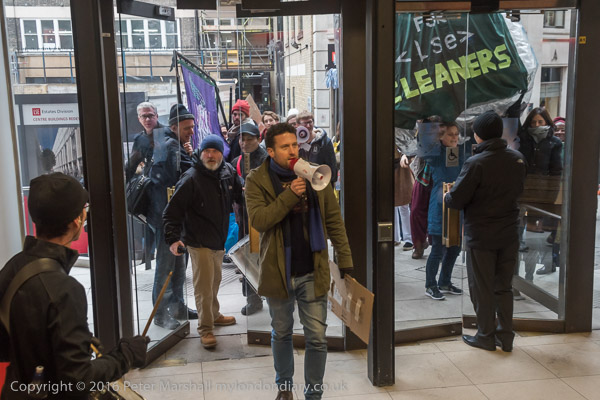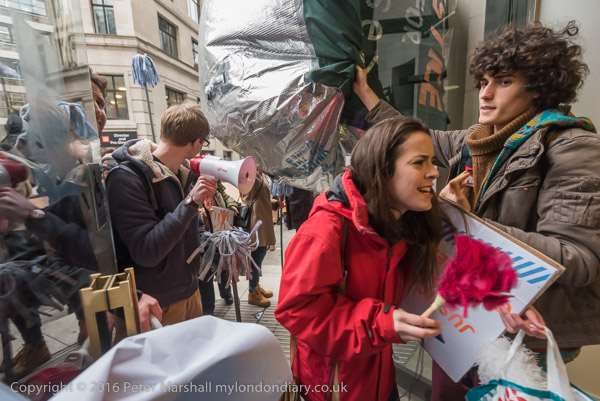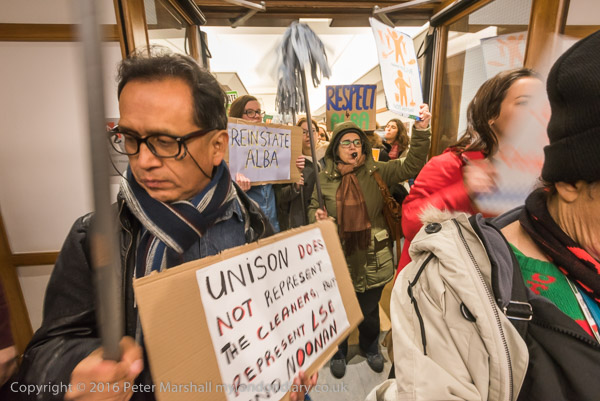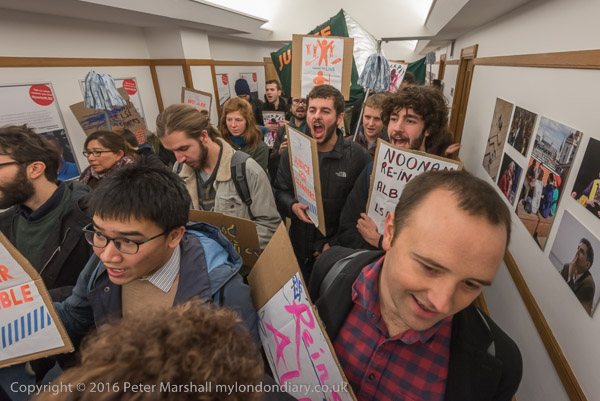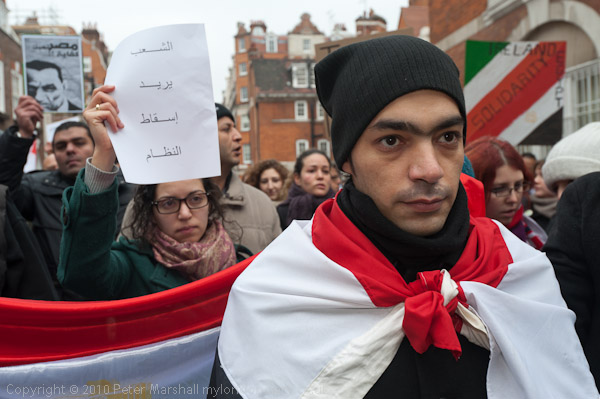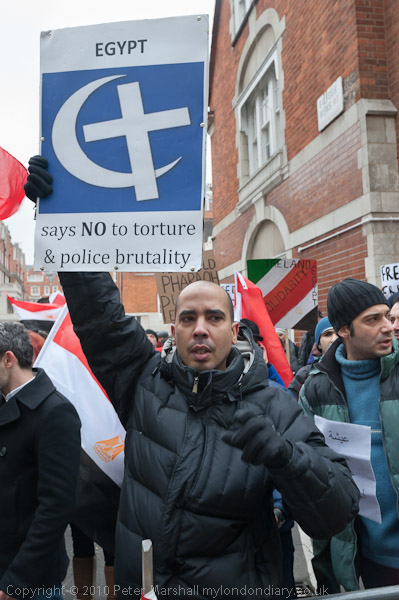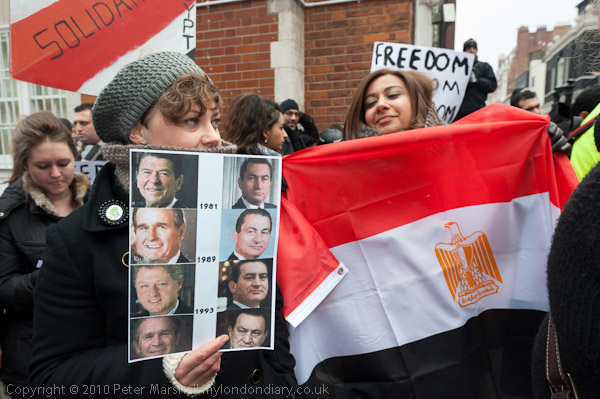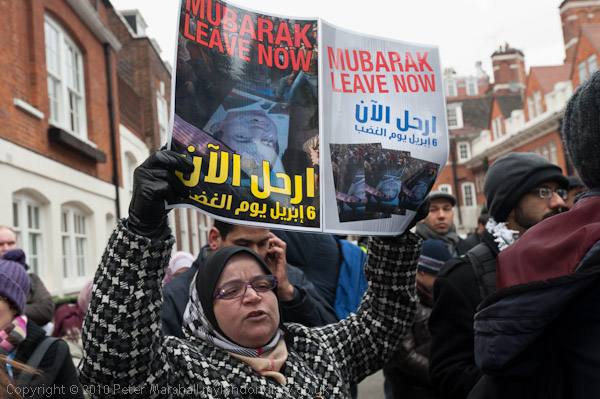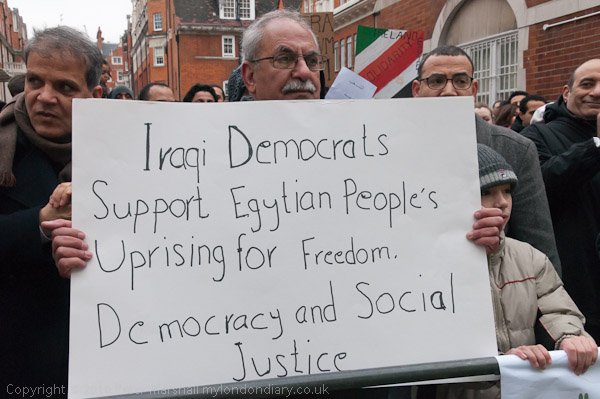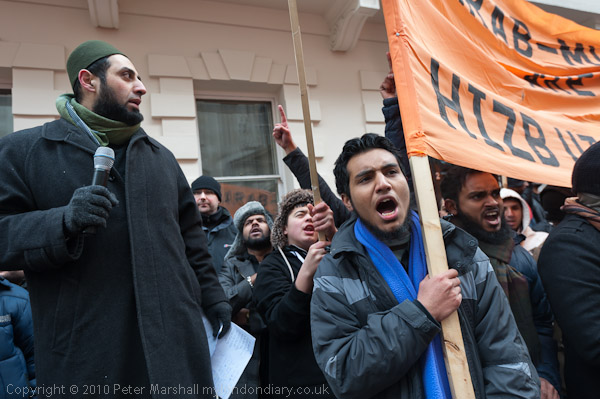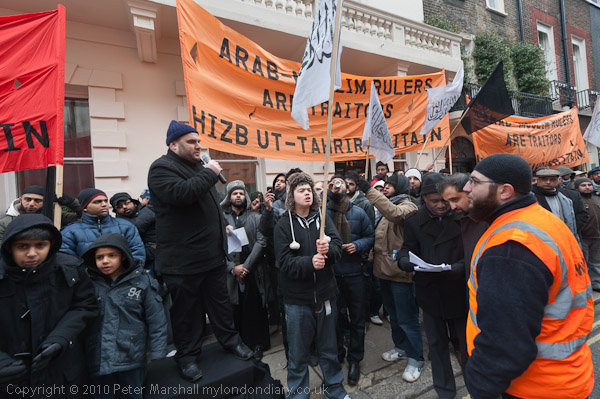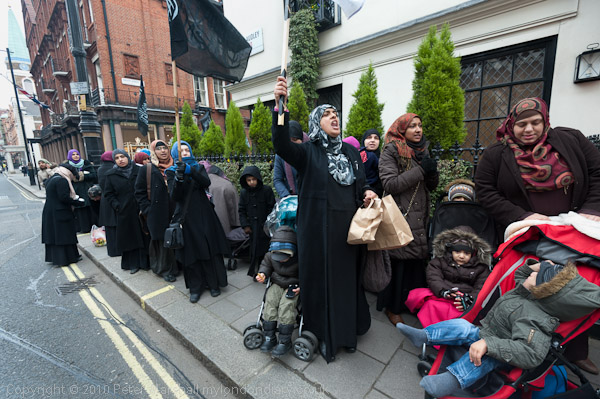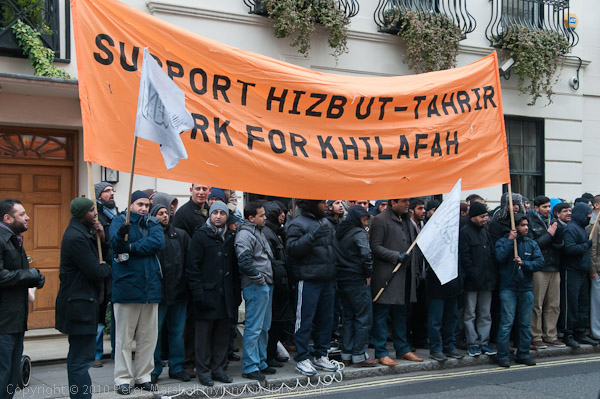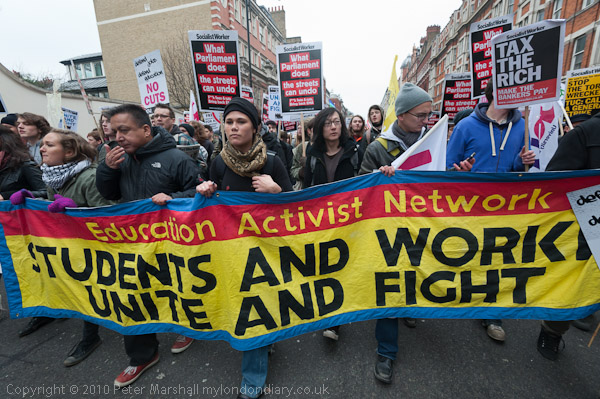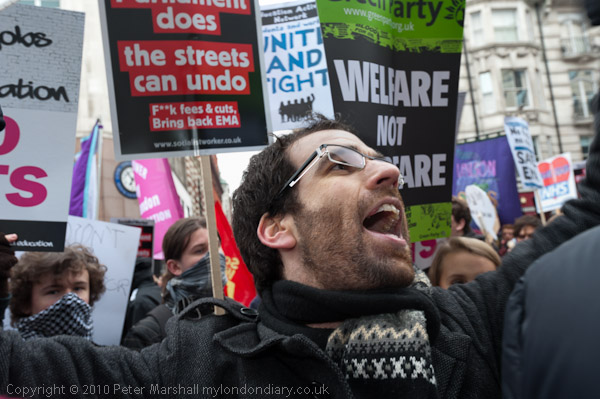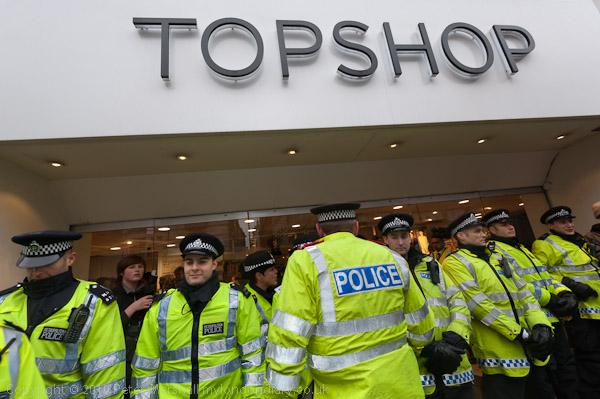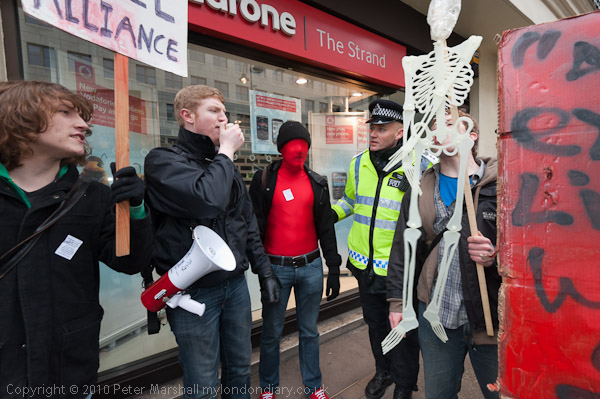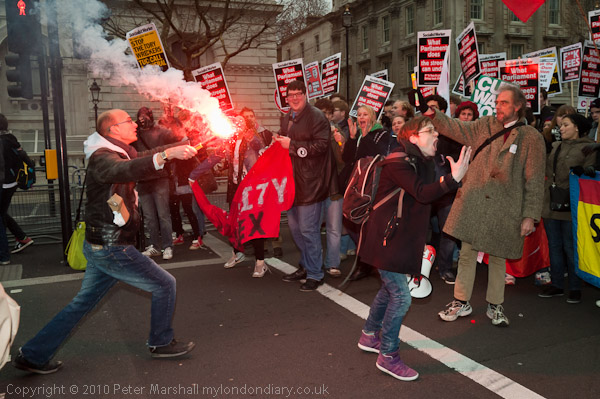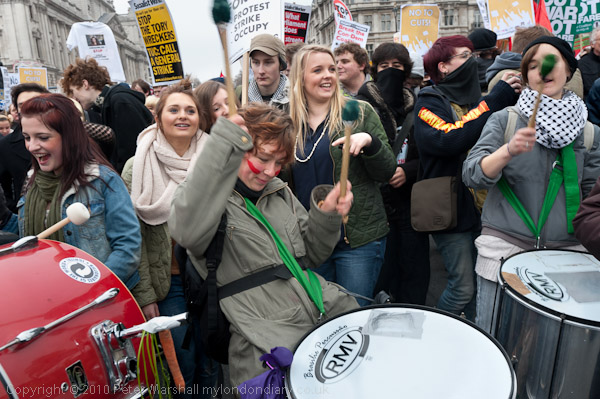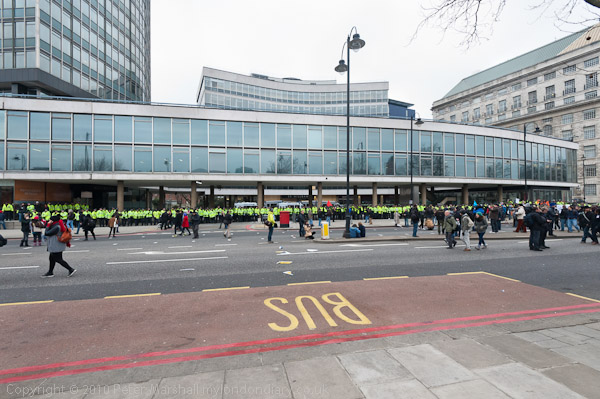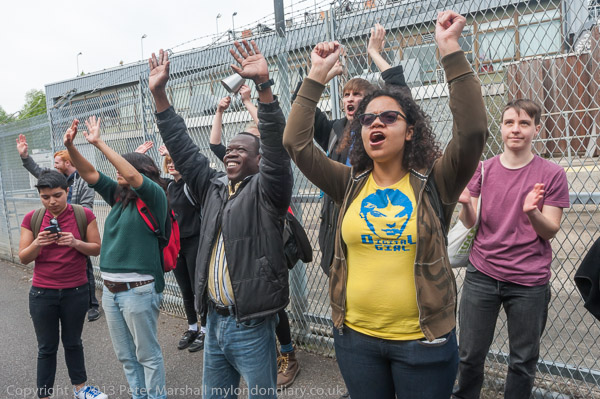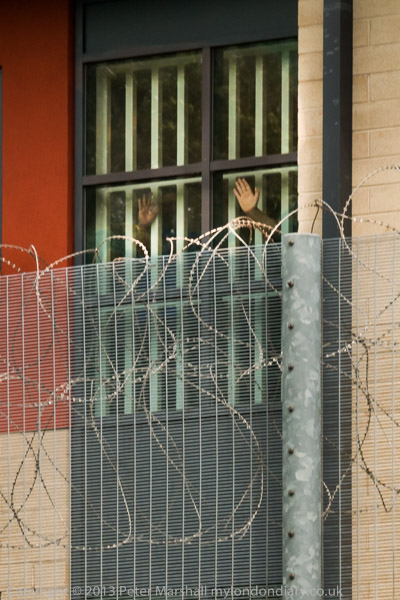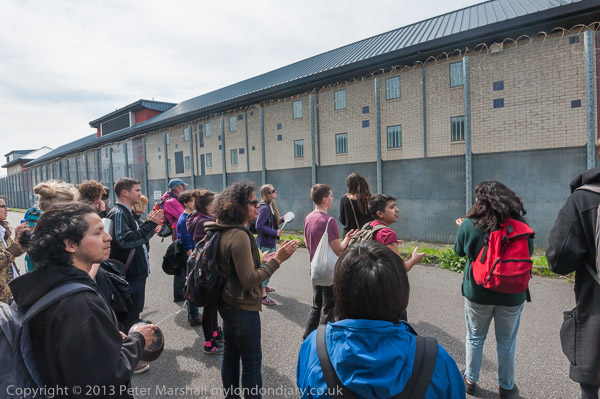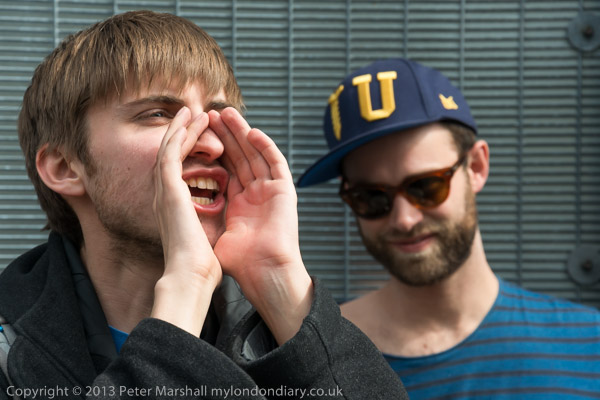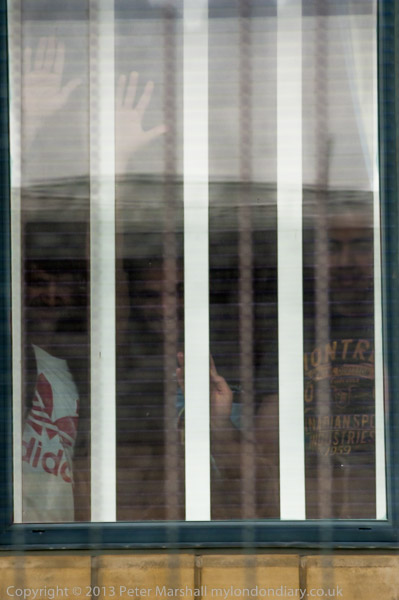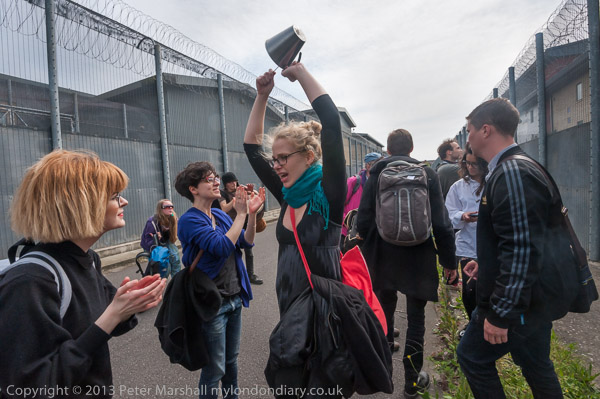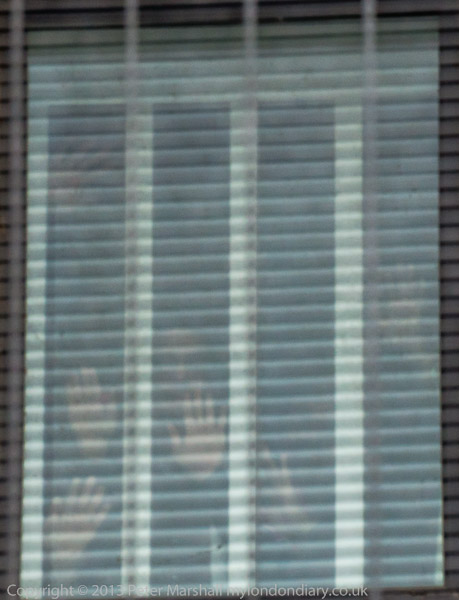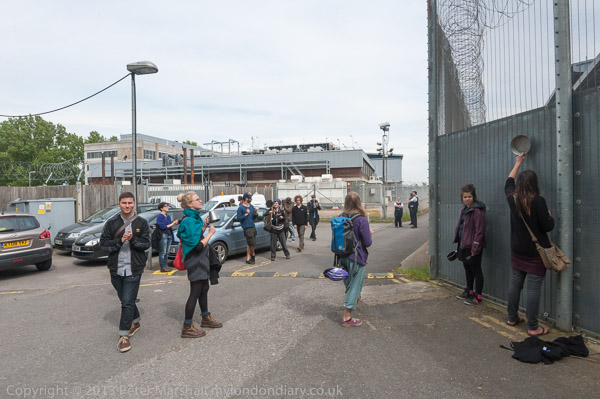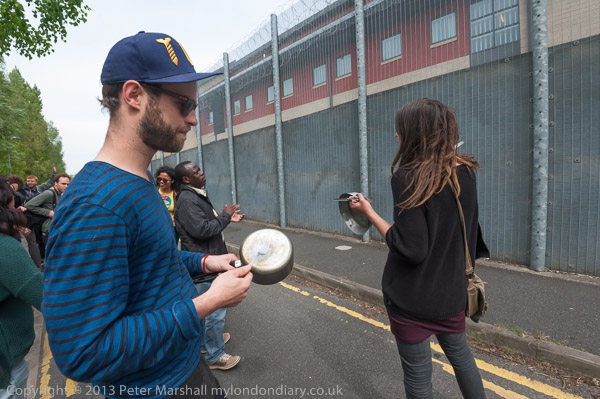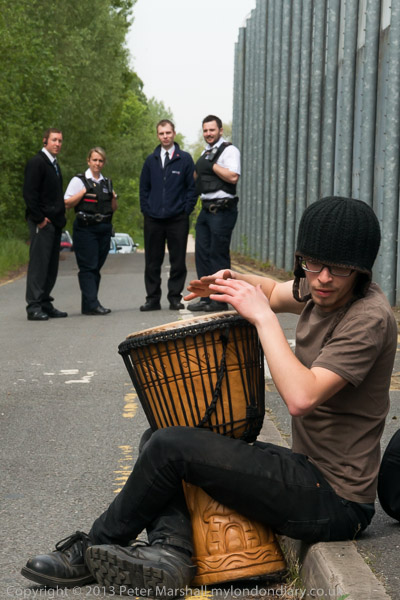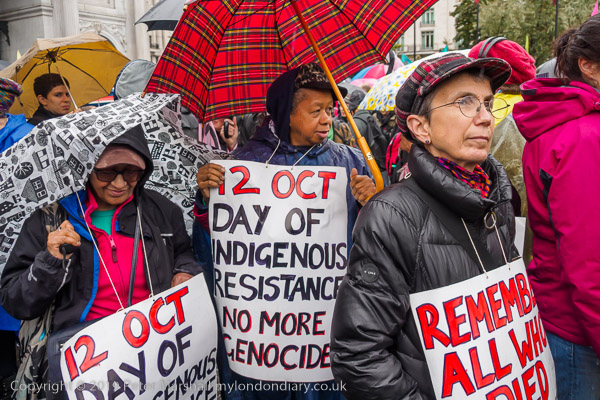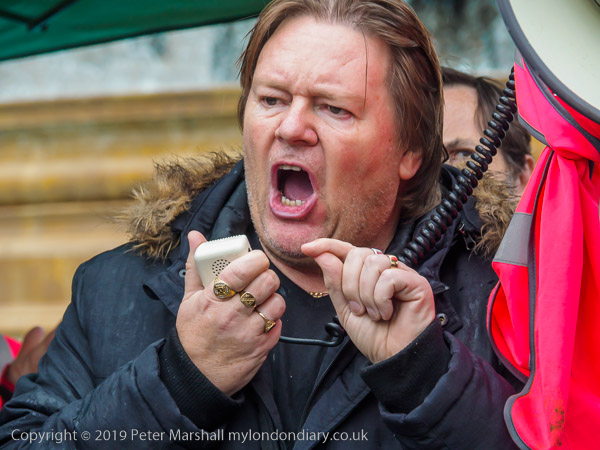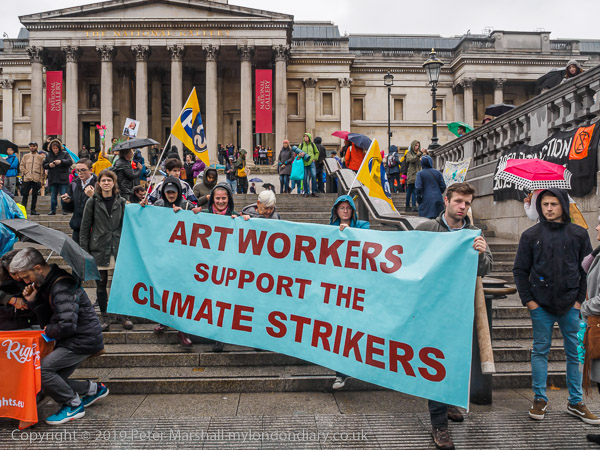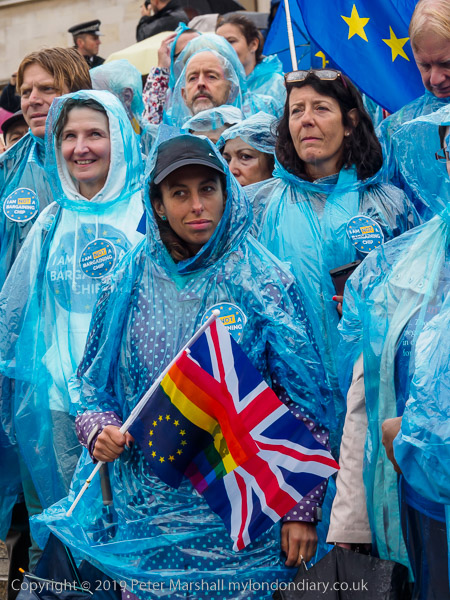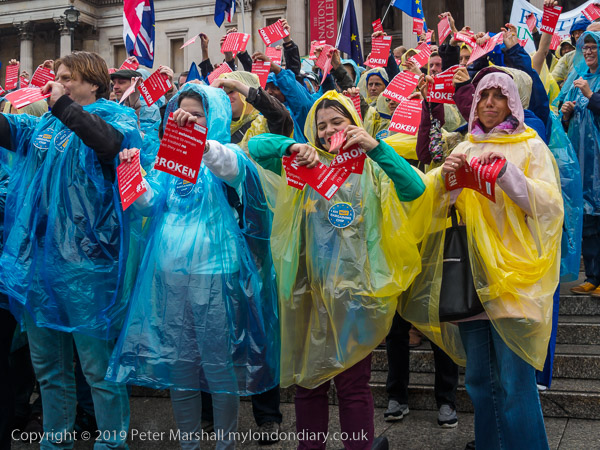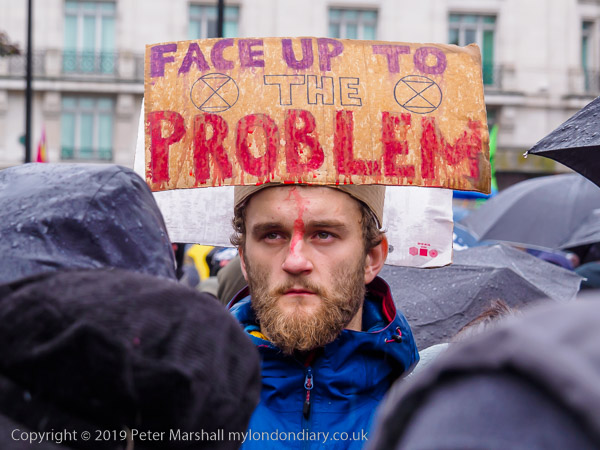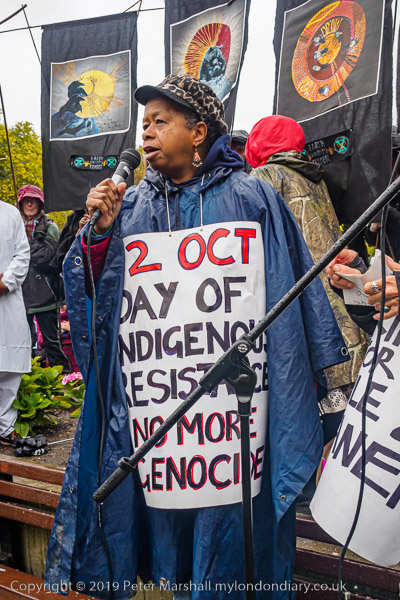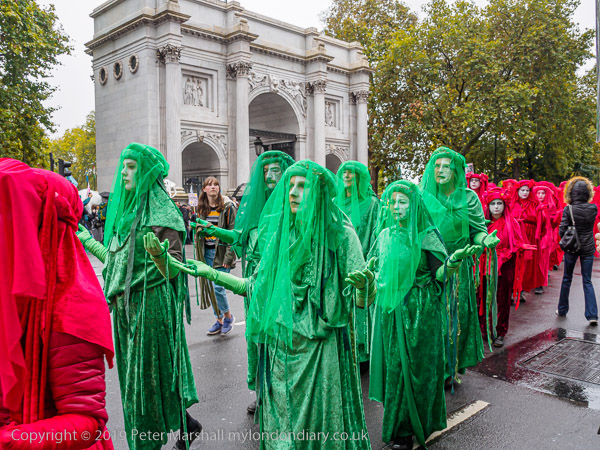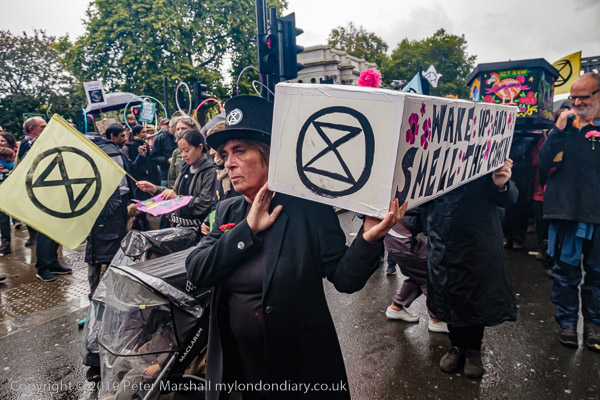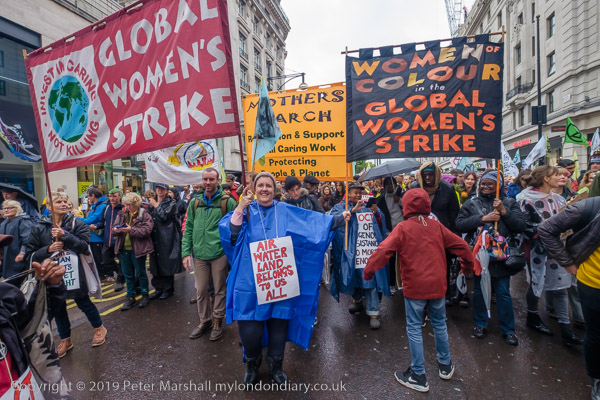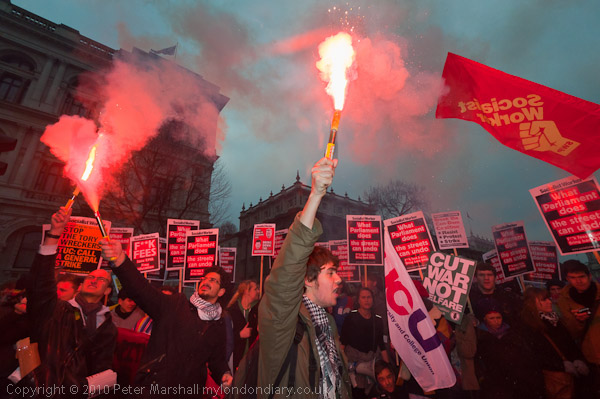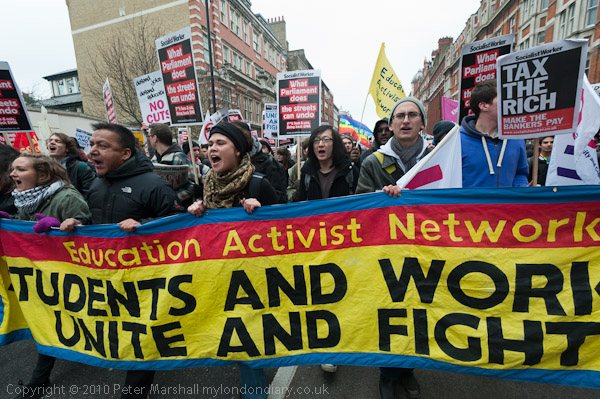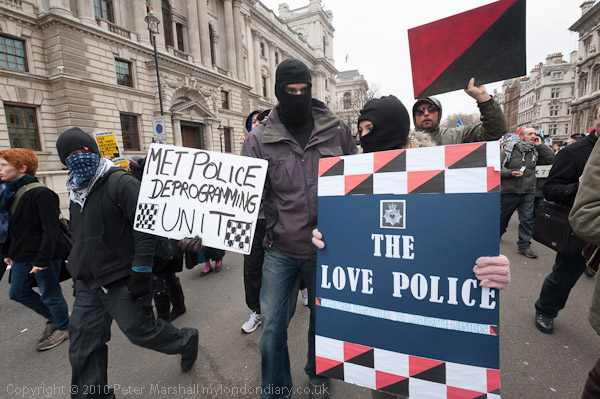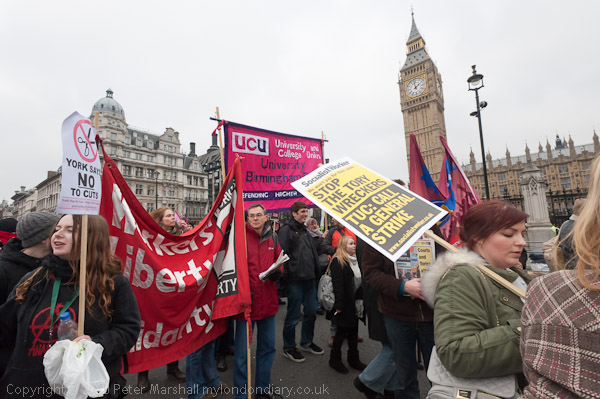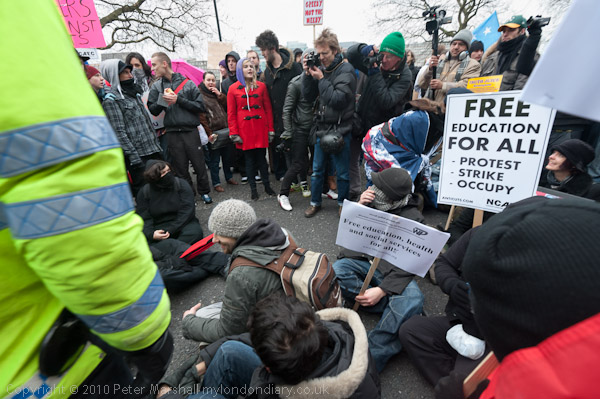Police Close Down Runnymede Magna Carta Festival: A couple of weeks ago I got on my e-bike and tried to cycle from Egham up Coopers Hill Lane which goes steeply up the wooded hill above the Thames flood plain at Runnemede. It wasn’t a great success as although the motor could cope with the gradient with a little more than usual help from my pedalling, the surface of the lane – here just a footpath was far too uneven and broken and I kept having to stop to prevent myself coming off the bike, eventually having to give up and get off and walk, pushing the bike for the final hundred yards or so.
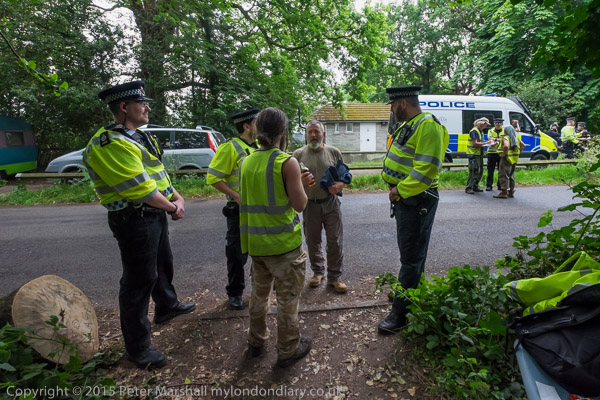
Close to the top I reached the metalled section of the lane and cycled on, past the fence I had gone through a gap in in ten years ago on my way to visit the Runnymede Eco Village and past the road leading to the expensive private estate that now occupies the site. On Friday 12th June 2015 I had cycled up the same route by pedal power alone, locked up my bike and walked to the Eco Village.

There I was warmly greeted and shown around the site, as you can read on My London Diary. The residents were busy getting ready for the Magna Carta weekend four day free ‘Festival For Democracy’ which was due to start the following day, celebrating both the anniversary of the signing of Magna Carta in the nearby meadows 800 years earlier and the third anniversary of the setting up of the village.
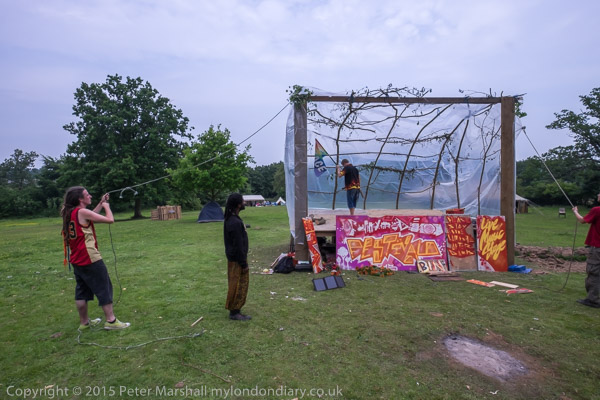
Although I’d not lived there I found it – as I commented in 2015- “seemed a great place to live so long as you were able to put up with a slightly spartan lifestyle. At my age I feel a need for hot and cold running water and a more pampered existence, but at least in summer a more open existence in the woods has its attractions.” It was a community that felt truly positive.

During my time there that day it became increasingly obvious that the authorities had decided that the free festival was not going to take place, although it was an entirely legal event and would have caused no distress to local residents with whom the villagers have good relations, and some at least were looking forward to the event.
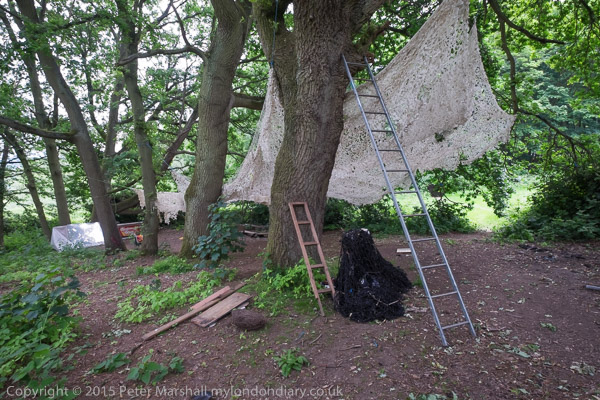
Orders had clearly come down, possibly from royalty itself via our government that the festival must be stopped by any means whatever the law. And police had come telling lies that they about a cock and bull story of a ‘rave’ that was going to take place on a neighbouring football field that they had come to ‘protect’ the village from.
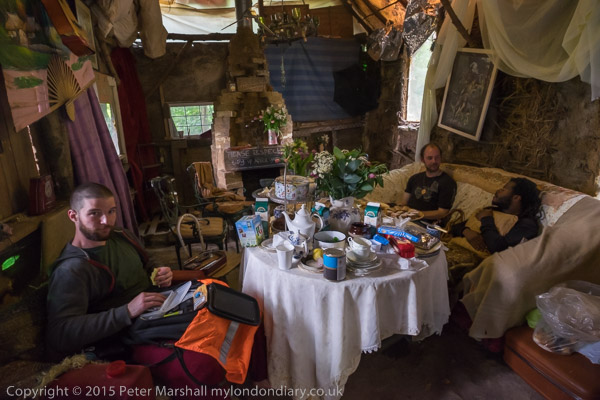
The invented story of an illegal rave was used by police and Surrey County Council to justify an order under Section 63 of the The Criminal Justice and Public Order Act 1994 which allows police power to restrict access, remove people and issue exclusion orders, and they used this to stop and turn away those coming to the ‘Festival For Democracy’.

Section 63 is specifically aimed at stopping illegal raves and should only be used to prevent ‘amplified music’ being played during the night, and certainly not for the festivals such as this one – hence the need for the authorities to spread rumours of an illegal rave. As well as being turned away, people were being given exclusion orders banning them from coming within five miles of the village, and several arrests were made for breach of this. The police action seemed a clear abuse of a law intended for quite different purposes, and I will be surprised if any of those arrested ever reach court.

At the time I wrote:
It would indeed seem a travesty if at a time when we are celebrating 800 years of freedom under the law against the arbitrary power of the state achieved at Runnymede, the authorities should abuse the law by using those arbitrary powers to prevent a people’s celebration of freedom.

This wasn’t the only action by which the state tried to stop the festival – and you can read more on My London Diary in Police threaten Runnymede Magna Carta festival which was at the time also posted on the now long defunct Demotix website. They didn’t entirely succeed, but it was on a rather smaller scale with so many being prevented from attending, though others managed to climb over the fences around the area. The account there also has many more pictures of the Eco Village.
I also write about this here on >Re:PHOTO at Celebrating Magna Carta, where I concluded:
Perhaps rather than celebrating Magna Carta we should all now be out on the streets and demanding a new charter for the freedoms we thought had been won 800 years ago.
Since 2015 we have instead seen governments introducing yet more restrictive public order laws and used them to take action against political protests and used to imprison peaceful protesters for long stretches, and Labour has continued these policies .
Flickr – Facebook – My London Diary – Hull Photos – Lea Valley – Paris
London’s Industrial Heritage – London Photos
All photographs on this page are copyright © Peter Marshall.
Contact me to buy prints or licence to reproduce.
